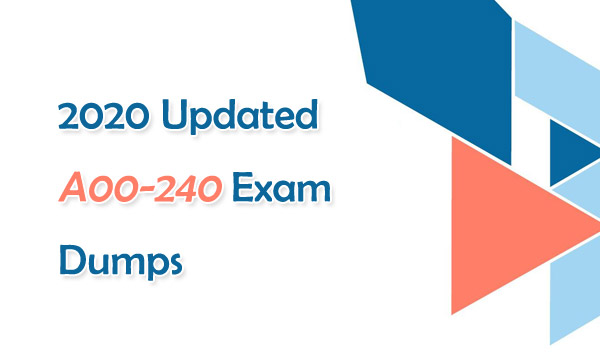2020 Updated Statistical Business Analyst A00-240 Exam Dumps
April 03,2020 03:18 AM
SAS Certified Statistical Business Analyst Using SAS 9: Regression and Modeling Credential A00-240 exam dumps have been updated, which contain 99 Q&As. With the new updated SAS Institute A00-240 exam dumps, you can prepare the test well. SAS Institute Statistical Business A00-240 exam official information and topics are also important in your preparation.

About A00-240 Exam
SAS Institute Statistical Business A00-240 exam is designed for SAS professionals who use SAS/STAT software to conduct and interpret complex statistical data analysis.
Number of questions: 60 scored multiple-choice and short-answer questions
Duration: Two hours
Passing score: 68%
Test Center: Pearson VUE
Exam fee: $180
SAS Institute A00-240 Exam Topics
The following contents are covered in SAS Institute A00-240 exam topics.
ANOVA-10%
Linear Regression-20%
Logistic Regression-25%
Prepare Inputs for Predictive Model Performance-20%
Measure Model Performance-25%
Practice Statistical Business Analyst A00-240 Exam Dumps
Statistical Business Analys A00-240 exam dumps updated version is the best material for you to clear the test. Share some SAS Certified Statistical Business Analyst Using SAS 9: Regression and Modeling Credential A00-240 exam dumps questions below.
1.In order to perform honest assessment on a predictive model, what is an acceptable division between training, validation, and testing data?
A. Training: 50% Validation: 0% Testing: 50%
B. Training: 100% Validation: 0% Testing: 0%
C. Training: 0% Validation: 100% Testing: 0%
D. Training: 50% Validation: 50% Testing: 0%
Answer: D
2.A confusion matrix is created for data that were oversampled due to a rare target.What values are not affected by this oversampling?
A. Sensitivity and PV+
B. Specificity and PV?
C. PV+ and PV?
D. Sensitivity and Specificity
Answer: D
3.An analyst has a sufficient volume of data to perform a 3-way partition of the data into training, validation, and test sets to perform honest assessment during the model building process.What is the purpose of the training data set?
A. To provide an unbiased measure of assessment for the final model.
B. To compare models and select and fine-tune the final model.
C. To reduce total sample size to make computations more efficient.
D. To build the predictive models.
Answer: A
A00-240 Exam Dumps PDF & SOFT | 1 Year Free Update | Money Back Guarantee
- Related Suggestion
- SAS 9.4 Advanced Programming Professional A00-232 Dumps October 04,2022

